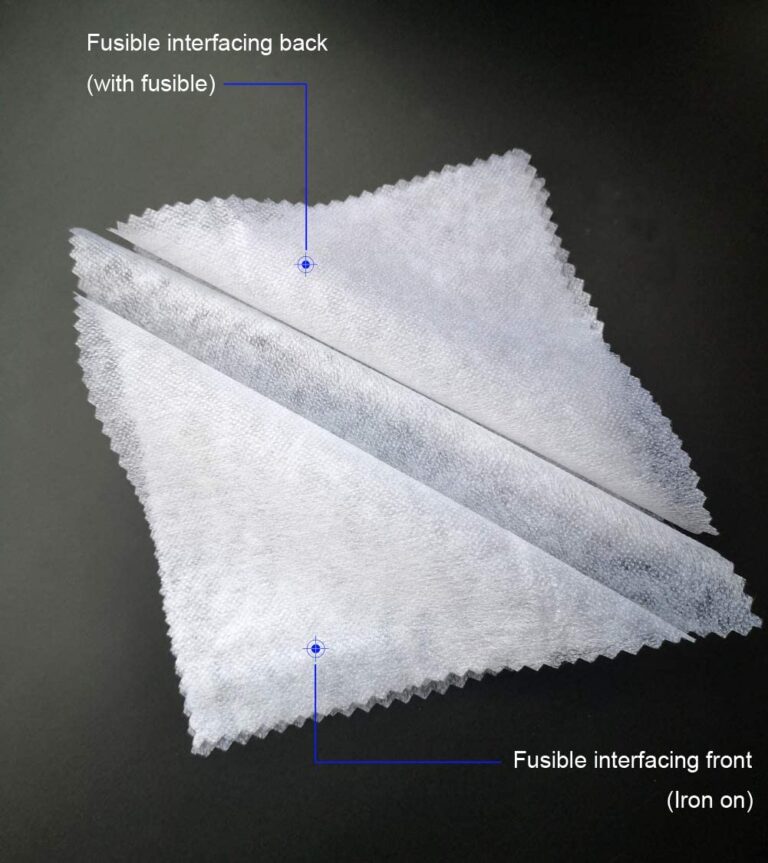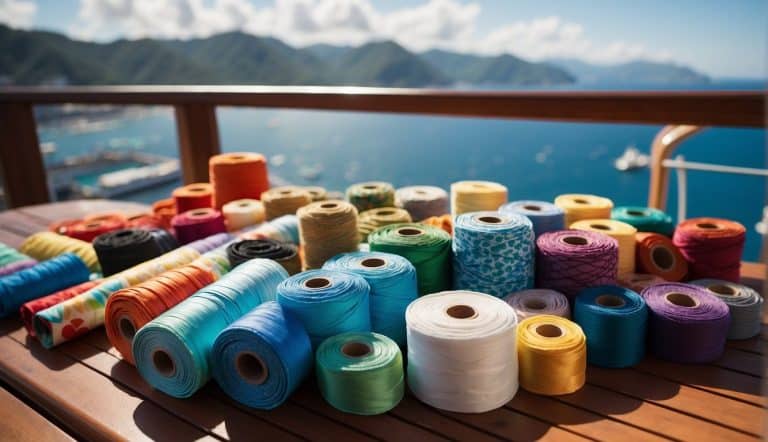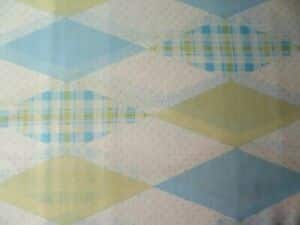Sound Absorbing Fabrics: Our 5 Best Choices
Sound absorbing fabrics are not the same as soundproofing materials, so let me explain the difference.
| Section | Key Points |
|---|---|
| Sound Absorption vs. Soundproofing | Sound absorption reduces echoes inside a room, while soundproofing blocks noise from entering or leaving a room. |
| What is Sound-Absorbing Fabric? | Sound-absorbing fabric improves the sound quality within a room by decreasing reverberation and echo but does not block sound transmission. |
| Types of Acoustic Fabrics | Sound-absorbing fabrics are thick and porous, absorbing sound frequency waves. Acoustically transparent fabrics cover absorbent materials and allow sound through. |
| Sound-proofing Fabric Thickness | Soundproofing fabric needs to be at least 2-inches thick. It absorbs sound but doesn’t block sound transmission effectively. |
| Soundproofing Fabric Acoustical Properties | Fabrics with an STC value block sound, and those with an NRC value absorb sound. The higher the value, the better the fabric performs in that aspect. |
| Best Sound Absorbing Fabric | The recommended options are Hanes Drapery Lining Serenity, JB Martin Concertino Cotton Velvet Bankers Grey, Europatex Style: Plush, Roc-Lon Drapery Lining, and Fabricut Style: Eclipse Blackout. |
| Sound Absorbing Fabric Buying Guide | The effectiveness of sound-absorbing fabric depends on its thickness, properties, and placement. Some fabrics can be expensive, so budgeting is necessary. These fabrics can also be used for other projects. |
Table of Contents
Sound Absorption vs. Soundproofing
When comparing sound absorption and soundproofing, we are looking at how different materials interact with sound wave energy. Some materials will absorb sound energy, some will reflect it, and others will allow it to pass through, or transmit.
Sound absorption is how we reduce the reverberation or echo within a room. A material that has an absorption coefficient or Class tells you the amount of sound it will absorb within a set frequency range. If the absorption coefficient is 0.30, then 0.70 (or 70%) of the sound is being reflected or transmitted through the material, or a mix of both.
Soundproofing is how we prevent or block noise from being transmitted through walls, windows, and doors. It is usually a material that reflects or absorbs broadband sound frequencies.
Concrete has a sound absorption coefficient of 0.03, so reflects or transmits more than 95% of soundwaves. Acoustic curtains have coefficients between 0.35 and 0.70, depending on materials and construction, which they don’t absorb, transmit or reflect.
Fabrics that have an NRC (noise reduction coefficient) are mainly for absorbing sound, materials with an STC (sound transmission class) identify how well they block sound and are soundproofing. Sound absorption and soundproofing depend on what you are trying to do.
If you want to improve the sound inside a room, absorption is the way to go. If you’re going to prevent sound from entering or leaving a room, then you want to soundproof.
What is Sound-Absorbing Fabric?
Sound absorbing fabric is not soundproof. It will improve the quality of sound within a room, by decreasing the reverberation and echo of the sound generated in the room. It may also marginally decrease the transmission of some frequencies between rooms. Sound absorbing fabric is used in homes, theaters, recording studios, restaurants, and even churches.
Fabric curtains or panels absorb or soften reflected noise to improve the sound in large and small rooms. They control sound and are less expensive than some options.
Similar to sound absorbing panels, deflectors, and traps, the thickness, density, fullness, and placement of the cloth affect how well it will moderate sound. Pleating increases the thickness, and hanging the curtains 6” to 12” from the wall or window increases sound control.
The material used for acoustic curtains is often made of recycled polyester fiber. Spun and woven into soft, thick velour or velveteen-like fabric, it softens sound by absorbing and reducing reflection.
The durable curtain is easy to maintain and available in multiple colors. Since it is hung in homes and large gathering places, it is also fire-resistant.
Types of Acoustic Fabrics
Acoustic fabrics are used for draping rooms and absorbing noise, or for wrapping absorbent materials and allowing the sound through. Cloths of different weaves and densities interact with a sound distinctly, so select a fabric for the purpose you want.
Sound Absorbing Fabric
Fabric that will absorb sound frequency waves is thick and porous. The waves enter the fabric, and some become trapped in the fibers and folds and convert from sound energy into heat. Sound energy that makes it through the cloth hits the wall or window 6” to 12” beyond.
It is reflected into the curtain again. Some more noise will be absorbed. The waves that pass back through the curtain into the room will be softened and dampened. Echo and reverberation are controlled, and listening enjoyment is improved.
The best fabric is a thick, 32-ounce velour-type cloth. Heavy blackout curtains are good too, especially multi-layered curtains. Some fabrics have an NRC (noise reduction coefficient), the higher the value, the better at decreasing reverberation, reflection, and echo.
Acoustically Transparent Fabrics
Transparent fabrics are used to cover acoustic panels, bass traps, and diffusers that are made of absorbent insulation. They cover and contain the fibers of the insulation while permitting soundwaves to pass through as if they weren’t there. Many fabrics are transparent.
To check if a fabric is transparent, hold it up to your mouth and blow through it. If the air passes easily through it, it’s transparent. There are different qualities of transparent materials. Look for cloth that is durable, strong, dust and stain-resistant, and the color or pattern you want; if it is fire rated, even better.
Sound Proofing Fabric Thickness
Using fabric curtains alone to soundproof a room or office isn’t practical. Soundproofing fabric would need to be at least 2-inches thick.
Heavy 32-ounce (or heavier) velour will absorb sound, especially the lower, longer waves of bass frequencies, but it doesn’t block sound transmission. A less expensive option is sewing two or more layers together for a thicker fabric.
There are industrial “curtains” available with an STC rating that block and absorb sound. They are more like wall hangings than drapes.
These fabrics don’t bend like fabric drapes. They often have two layers of thin insulation quilting – like a quilted moving blanket – with an MLV (mass-loaded vinyl) sandwiched in between.
The soundproof rating improves with the thickness of the MLV. Sound waves are absorbed by the quilted insulation layer but have difficulty penetrating the MLV.
This type of curtain is heavy and more rigid; it’s more of a barrier. The MLV adds 0.5 to 2.5 lb/ft² to the weight and raises the curtains to an STC between 25 to 33. It is also hung closer to the wall or window since the airspace between the wall and curtain is unnecessary.
Soundproofing Fabric Acoustical Properties
Materials that have an STC value identify how well they will block sound. Fabrics with an NRC value identify how well it absorbs sound. They may have both, or neither, it depends on if the manufacturer has tested them for soundproofing or sound absorption.
Some fabrics are tested directly over drywall to simulate curtains and determine their NRC rating. Set frequencies from 125Hz to 4000Hz are tested against the fabric, and the average is the NRC.
Look for the results of the frequency tests; they provide useful information. Higher numbers at different frequencies indicate what sounds the fabric will work with best.
The results for the frequency spectrum tell what frequency range the fabric absorbs best. Values of 0.02 for 125Hz and 0.05 at 250Hz indicate poor performance at low-range frequencies or bass sounds.
Scores of 0.35 at 500Hz and 0.68Hz at 1000Hz indicate good control of mid to upper mid-range frequencies. Higher values like 0.78 and 1.0 for 2000 and 4000Hz indicate excellent control of higher frequency waves.
There are thousands of fabrics available online and in stores claiming to have acoustic qualities. Some work well as acoustically transparent covers, and others will be better for curtains that absorb sound. Here are some reviews to get you started.
Best Sound Absorbing Fabric
Here are our sound-absorbing fabric reviews
1. Hanes Drapery Lining Serenity
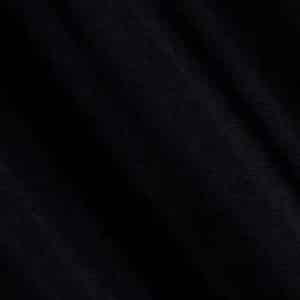
Blackout drapery fabrics often contain noise insulation properties, which can make them effective at absorbing sound. These fabrics can be sewn into other fabrics for extra sound absorption, or they can even be sewn together. For lighter sound absorption, they can be hung as is.
- Fabric is medium/heavyweight and is 100% polyester
- As well as having noise insulation properties, it also helps block out sunlight to protect against thermal loss, and is resistant to creasing, water, and stains
- Dry clean only
2. JB Martin Concertino Cotton Velvet Bankers Grey
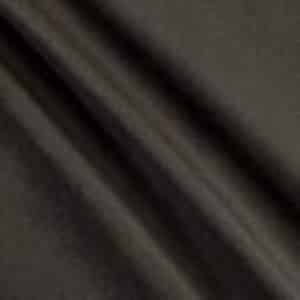
Some velvets and velour fabrics can be used for sound absorption. These fabrics generally have to be very heavyweight (35oz or greater). As most fabrics aren’t this heavy, it is a good idea to buy extra fabric and sew two to three, or more, layers together to achieve greater sound absorption. This fabric is very heavyweight, but at 14.4 oz/square yard, so sewing two layers together would be more effective.
- This 100% cotton fabric is very heavyweight
- The fabric is dry clean only
- Velvet fabric can be used for many different projects including window treatments, upholstery, accessories, pillows, slipcovers, and more
Related articles you may be interested in:
3. Europatex Style: Plush
Velvet can be a good fabric for sound absorption. This velvet is very heavyweight (36oz per square yard). A heavy-weight fabric, especially anything above 30oz, can be used for sound absorption. Velvet is a beautiful, rich-looking fabric that can be used for many applications throughout the home. This fabric is extremely durable and can be used for window treatments, upholstery, home accessories, and more.
- Fabric is 100% polyester
- Dry clean only
- This line of velvet fabric comes in over twenty different colors
4. Roc-Lon Drapery Lining
Blackout drapery can be an effective sound absorbing fabric. Roc-Lon Drapery Lining has a 3-pass lining that helps reduce noise as well as muffle sound and also achieves 100% blackout. This lining can be used by itself or can be sewn as a layer into other fabric for increased sound absorption and protection against thermal loss.
- Fabric is medium weight and is a blend of 70% polyester and 30% cotton
- Dry clean only
- Fabric can be used in the home or commercially in workplaces or schools
5. Fabricut Style: Eclipse Blackout
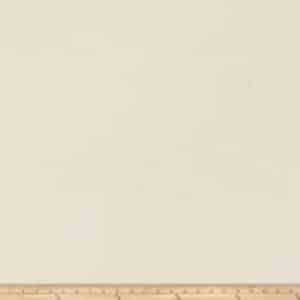
This blackout fabric also muffles sound and can help reduce noise outside of a room. The fabric has a 3-Pass lining (three layers) that helps the fabric achieve total blackout, and also ensures that the fabric can be used as a standalone drapery, but could also be sewn as a lining for other fabrics. This fabric can be used in homes or in commercial settings as well.
- The front of the fabric is a blend of 70% polyester and 30% cotton, while the back is 100% acrylic
- Fabric is medium to heavyweight (9.36oz per square yard)
- Dry clean only
Sound Absorbing Fabric Buying Guide
Soundproofing a room is not the same as soundproofing a room. Sound absorbing fabrics can decrease echoes in a room to help sounds within the room sound better, and it might reduce the amount of noise that travels between rooms or areas, but sound absorbing fabric is not designed to eliminate sound. Sound absorbing fabric can be used in homes and many commercial buildings. The thickness, properties built into the fabric, and where the fabric is placed can all affect how sound is absorbed.
Budgeting For Sound Absorption Fabrics
Some sound absorbing fabrics can be pricey, especially if you consider having to sew them together for the desired thickness. Other fabrics can be more budget-friendly, even if sewn together. Some fabrics,, like blackout lining, can often be used in conjunction with another fabric, for even more sound absorbing properties. Many blackout fabrics are already designed to muffle sound, especially at the window, and could be a great addition to another fabric for sound absorption.
Other Projects
Many fabrics that are great for sound absorption can also be used for other projects. While blackout fabric is generally designed to be used at the window, it can be sewn as a lining for another fabric, for more sound muffling/light-blocking window treatments. Other fabrics, like velvets and velour fabrics, can be used for slipcovers and upholstery, as well as window treatments, and many other projects, making them very versatile. Extra fabric can be easily used for other projects, matching accessories, and more.
Recommended Reading:



